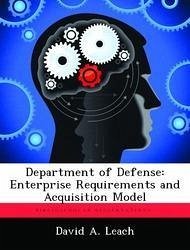Nicht lieferbar

Department of Defense Acquisition Workforce: Color Me Purple?
Versandkostenfrei!
Nicht lieferbar
In this paper, the author addresses a support force structure issue-the size of the DOD acquisition workforce. The last four National Defense Authorization Acts (NDAAs) have mandated cuts to this workforce. Zealots in Congress, mostly in the House National Security Committee, have targeted the acquisition workforce as low hanging fruit to fund modernization and readiness programs that have been neglected for years. Despite reductions the Services' have already achieved, reduction advocates in Congress believe the acquisition workforce should be reduced commensurate with the operational forces ...
In this paper, the author addresses a support force structure issue-the size of the DOD acquisition workforce. The last four National Defense Authorization Acts (NDAAs) have mandated cuts to this workforce. Zealots in Congress, mostly in the House National Security Committee, have targeted the acquisition workforce as low hanging fruit to fund modernization and readiness programs that have been neglected for years. Despite reductions the Services' have already achieved, reduction advocates in Congress believe the acquisition workforce should be reduced commensurate with the operational forces draw down. In essence, they view this as a tooth-to-tail dilemma--too much support compared to the war fighting capability. The author used a variety of sources to address the DOD acquisition workforce size issue. Primary sources were published government documents such as public laws and defense reports. However, information from interviews with senior DOD acquisition leaders and selected congressional staff members, and pertinent guest lecturers at Air War College were used to complement the primary sources. After presenting background information, the author evaluates four alternatives for reducing the DOD acquisition workforce. After presenting the pros and cons of each alternative, the author provides a viable option to reduce the size of the acquisition workforce without jeopardizing the acquisition mission.









